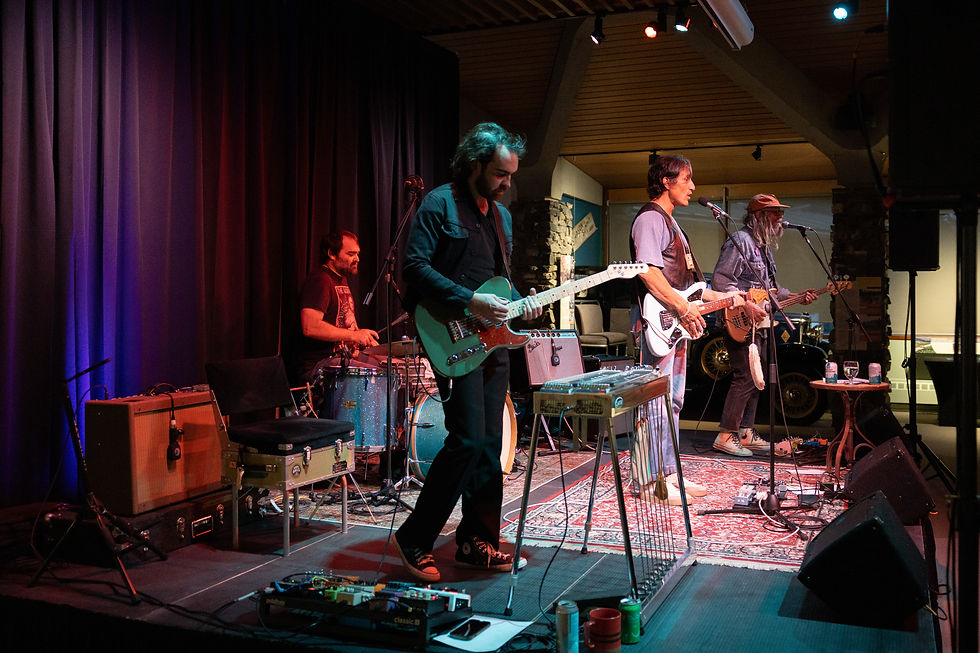Indigenous Voices in the Archives
- Jan 27, 2022
- 3 min read
Updated: Apr 21, 2022
By Jacinda Brisson, Archives Indigenous Research Intern
Young Canada Works at Building Careers in Heritage (Career Focus)
Our museum holds so much history. History that is not always fair or just but that doesn’t mean it’s too late to change our own practices. Late last year I moved from my home in Red Lake, Ontario to begin my internship here at the Whyte Museum for the winter. I’m a mix of Cree, French, Italian, and Ojibwe from Treaty 3 territory and a recent graduate from the University of Western Ontario with a BA Honours in Indigenous Studies and Visual Art.

Image 1
When I started my position as the Archives Indigenous Research Intern, one of my first takes was a big one – changing how Indigenous peoples are being represented in the archives. Well, the actual task was to rename our Indigenous newsfile folders and sort through newspaper articles. But what it really meant to me was making a change to the way we see Indigenous representation in the archives.
Evolving Trends in Perceptions
These articles told many stories but almost always from a non-Indigenous perspective. It was interesting to see patterns in the articles throughout the years and how the topics changed based on what was of interest at the time. Between the ’20s and ’50s, many articles focused on Indigenous culture and preserving the spirit of the “vanishing Indian,” thinking these cultures were destined to die out within the coming years. Then as time went on, the articles began to focus more on politics, such as exchanges between the Canadian government and Indigenous nations involving concerns of funding and resources. Between the '90s and early 2000s there seemed to be a period where newspapers were fixated on certain social issues impacting First Nation reserves. Suicides, violence, poverty and addiction, the topics were grim and it was a disheartening chapter to sort through on my end. As I grew closer to the present, topics aired on a more political side once again, along with residential schools taking over a strong presence in the early 2010s then again in 2020.
Gallery 1
The language and way Indigenous peoples were talked about in these articles were not always positive, but I couldn’t change that – it’s history and an important marker to show how our society has changed or in some cases stayed the same. What I could change, however, was how this material was being displayed in the archives.
Representation of Material
I started with 13 folders, filled with hundreds of newspaper clippings from upwards of the last 90 years. Most folders had ambiguous titles with outdated language such as “Indians-Canada” or “Stoney Indians 1,2,3…” and so on. I went through every article in each folder and by the end, I turned those 13 folders into 96.

Image 2
You can now find articles on a several different topics such as the arts, businesses, health, language, youth and more, sorted individually by nation. For example, if you’re trying to find something about Indigenous relationships with the environment in the Banff area, you might look under folders like “Stoney-Iyârhe Nakoda Environment”, “Blackfoot-Siksika Environment” or “Indigenous Environment Alberta.” Not only is it going to be easier to find the information you’re looking for, but it gives each nation a voice and a place in our collections.
It’s important for us to continue work such as this in the archives and across the museum to increase Indigenous voice and build on our relationships with the many Indigenous nations that reside in the Treaty 7 territory. Our work here isn’t done, so look forward to the future, because I know there will be much more to come.
Images:
Image 1: Jacinda Brisson with newsfiles in the Whyte Museum Archives and Special Collections. Photo supplied by Jacinda Brison.
Image 2: The new newsfile folders vs the old newsfile folders of Indigenous-related news articles in the Whyte Museum Archives and Special Collections. Photo supplied by Jacinda Brison.
Gallery 1, Image 1: Stoney-Iyârhe Nakoda Powwows & Ceremonies,1972. Library-Newsfile (Subject files)
Gallery 1, Image 2: Stoney-Iyârhe Nakoda Inherent Rights, Treaty Rights & Land Claims, ca. 1940-1950. Library-Newsfile (Subject files)
Gallery 1, Image 3: Indigenous Environment Alberta, 2014. Library-Newsfile (Subject files)









Thank you for your helpful post! It is no secret that unpleasant situations related to the law often arise in life, and in this case I would advise you to contact a good lawyer - Paul Mankin. I have been working with him for several years now, and more than once he has solved my problems with maximum benefit to me. So please do not hesitate to contact him if you need anything. Have a great day!